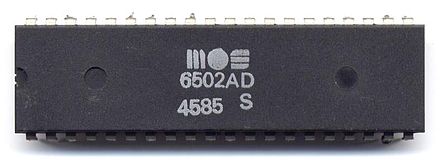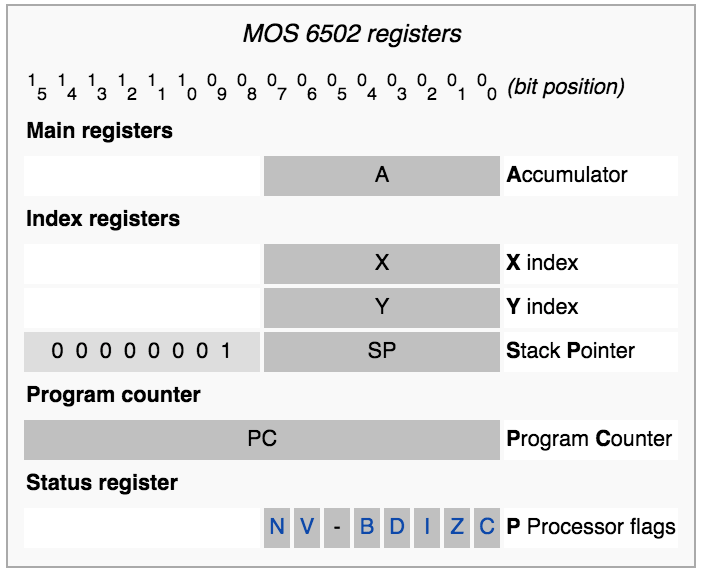Writing a CPU emulator as a Dojo
At Unruly the developers have a passion for learning new things. We have many ways of accommodating these passions, including Gold Cards (which is our version of 20% time), fortnightly Tech Talks (5-10 minute lightning talks) and Dojos (hour long sessions on a given topic).
Developers can propose to run a single Dojo, or a series of Dojos, on a topic of their choosing. This allows anyone that’s interested an opportunity to learn something new or try a technology that another team is using.
We usually run a Dojo session every Wednesday at 12:00 during work time, which lasts for one hour.
Some of the topics we’ve covered already are:
- Rust (rojo)
- Go (gojo)
- Scala
- SpriteKit (Apple iOS/OSX game library)
- Android
- Objective-C
- Conway’s Game of Life
- Javascript Promises
- Swift
- Java 8
- CSS
I really wanted to learn more about how CPUs worked so I proposed to run a series of Dojos on writing a very simple CPU emulator.
The CPU
I realised that the CPU should be very simple so we could all grasp what was going on and write some code within the hour. That ruled out modern CPUs, even 8bit ones, as they have lots of registers and opcodes.

For this reason I looked towards the CPUs of my video gaming youth and settled on the MOS 6502 which was used in many of the great computers of the time:
- BBC Micro
- Commodore 64
- Nintendo Entertainment System (NES)
- Atari 2600
- Apple IIe
Running a successful Dojo
When running a Dojo it’s best if you can:
- find an interesting topic
- cover some core parts of the topic
- create interesting challenges
- make it rewarding and make it feel like people have achieved something
- fit all this into one hour blocks (for the style of Dojo we run)
Introducing the parts of a CPU
The main reason I wanted to run the Dojo was to encourage myself to learn more about how CPUs worked and I thought others would find it interesting too. For that reason I’m pretty sure there are a few things which are incorrect, but in the end it’s not that important as the goal was a learning experiment and to provide an outline of how a CPU worked.

We were never going to build a real 6502 CPU emulator in a few hour long sessions so I came up with a cut down set of specs to work towards.
The CPU should:
- start small and introduce key components gradually over the Dojo series
- have an extremely small subset of opcodes that are similar to the 6502 in name and function but without all the different ways of addressing memory
- start with no restrictions on integer size, i.e. we won’t be handling the 8bit nature of adding two large integers and having to deal with 16 bit little endian numbers, as this could be added in a later Dojo
- start with a small amount of memory
Lets go Dojo!
The fun part of running a Dojo is that everyone starts off together writing code against the same problem and as this was an abstract problem people were free to choose whatever programming language they wanted to use.
Most people settled on using either Java or Javascript to write the CPU emulator. What was interesting is that a few people test drove their implementation from the beginning which held them in good stead for future CPU Dojos. Those that didn’t even write tests soon realised that even when you’re hacking away at a small throw away hour long problem it is still very valuable to be test driving the code.
After the first session many people threw away their code and re-wrote it using TDD.
Dojo 1 - Introduction ( download PDF )
In the first Dojo we start by building an extremely simple CPU with a couple of registers, three opcode instructions and a 16 item size of memory. I’m using the term item as we aren’t restricting the memory to be byte sized at the moment.
This is a great introduction to how programs are stored in memory, where values required by the opcode instruction sit in sequence order after the opcode instruction.
The task set out is to:
- store the number 100 into register a
- add the number 7 to register a
- store the value of register a into memory address 15
- stop the program
Dojo 2 - Branching ( download PDF )
In this Dojo we add more registers, some more opcodes for incrementing and decrementing register values and start delving into the exciting world of branching. I wrote a simple program which used a couple of registers and added branching to allow a section of code to be executed a number of times before continuing on with the rest of the program.
In the same vain as machines like the Commodore 64 we reserve a certain area of memory to be treated as video memory. Well in this Dojo I just wanted people to read back the values of that memory location as ASCII and tell me the song lyrics that were there.
Dojo 3 - Subroutines ( download PDF )
Let’s make it easier to write more complicated applications. In this Dojo I introduce subroutines which allow us to write reusable functions.
To support subroutines we need to add a new register, the stack pointer, which will point to a memory address of where the current stack head is. By adding a stack to the CPU we can push the current program counter onto it when executing a subroutine and to pop it off again to jump back to where we left off.
To simplify things I suggested that we reserve the last x items of memory to be reserved for the stack.
I then rewrote the previous song lyric application using subroutines to see if people could get it to run on their updated CPU.
Dojo 4 - Assembly ( download PDF )
As we started to flesh out our CPU I thought it would be nice to be able to write code in a more human readable format, so in this Dojo we set out to write a simple assembler.
That means instead of machine code (a series of bytes) like this
1, 100, 2, 7, 3, 5, 0We can write Assembly like this
; Comments are marked by a semi-colon
LDA 100 ; load 100 into register a - LDA maps to opcode 1
ADC 7 ; add the number 7 to the value in register a - ADC maps to opcode 2
STA 5 ; store the value in register a into the memory address 5 - STA maps to opcode 3
BRK ; break. Stop the program - BRK maps to opcode 0I then rewrote the song lyric application again but this time in our assembly language (modelled on the 6502 assembly language) and gave it to the developers to compile into machine code and then execute on their CPU. It included many subroutines and nested subroutine calls to ensure things weren’t that easy.
Example of part of the assembler, in this snippet we’re looping three times and jumping to other subrountines
...
LDY 3 ; load 3 into register y (so we can loop 3 times)
loop: ; label named "loop"
DEY ; decrease the value in register y by one
JSR space ; jump to the subroutine labeled "space" in the assembly
JSR who ; jump to the subroutine labeled "who" in the assembly
CMY 0 ; compare the value in register y to 0, set the equal flag if they are the same
BNE loop ; branch if not equal, change the program counter to point to the label "loop"
; if the equal flag does not equal 0
BRK ; break. Stop the program
...Further Dojos
That’s as far as we got with this particular topic. There are many things I wanted to do, including:
- getting people to write their CPU’s again, or update them, to be real 8bit CPUs. That means when adding up two large bytes like 200 and 150 you will need to store the result in two memory addresses (16 bits) and in little endian order. This would also mean that we’d need to start thinking about having more opcodes for the same instruction, one for reading/writing 8bit numbers from memory and one for 16bit. There would also be a need to think about signed and unsigned numbers.
- reserving a section of memory to act as video memory and then drawing a circle. Unless the application to draw the circle was supplied then I’m not sure this would be achievable in an hour. It would be good homework though for those that are interested
Example implementations from our Dojos
Here are some of the CPUs that people implemented in the Dojo sessions:
Further Reading
All of the example code and worksheets to run your own Dojos can be found on my GitHub page https://github.com/timpickles/cpu-dojo
Here are some useful links about the MOS 6502:
- MOS 6502 Wikipedia Page
- Easy 6502 - excellent 6502 assembly introduction with emulators embedded directly in the tutorial which have the ability to step through each assembled instruction in the program and inspect the registers and memory.
- Visual 6502 - Want to see all of the transistors and paths taken for every opcode overlaid on a photo of a real 6502 while a program is running, then look no further!
I hope that has wet your appetite to learn more about CPUs and perhaps run a Dojo within your team.
Let me know how you got on or have any suggestions via @timpickles on twitter or email me